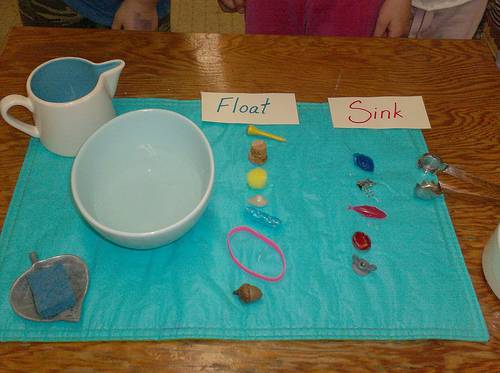This is a sink or float experiment that encourages predictions and observations about buoyancy and density. Through their observations, your child will learn that buoyant objects float and dense objects sink. This activity can happen inside at the sink, a bathtub or with any container that holds water. It can also happen outside the weather is nice! Another option is to add flavored juice crystals to the water for scent and color.
Materials:
*A tub or container, such as a plastic tub, basin, pot, bucket etc. that will hold water
*A towel to wipe up any spills
*A fish net or big spoon
*Two wash cloths of different colors to set items on after they have been tested
*Small items that will sink: Coins, Stones, Glass gemstones or marbles, Toy cars, Keys
*Small items that will float: Corks, Popsicle sticks, Legos, Sponge pieces, Lids, Rubber balls
Activity:
Start by filling your tub with water and gathering the items together (or have your child find the items in a scavenger hunt type activity). Your child will hypothesize whether they think each item will float or sink, and then test their theory. After the test for each item is completed, they will use the big spoon, or the fishnet, to fish out their item and set it on the proper washcloth. One colored washcloth is for the items that were more dense and sank, and the other colored washcloth is for items that were more buoyant and floated. Explain that items sink or float based on their density. Density is determined by how close or far apart molecules are within an item.
Extension: Have your child blow on floating items with the a straw and discuss kinetic energy and wind power.



